Related Research Articles

Novosibirsk is the largest city and administrative centre of Novosibirsk Oblast and the Siberian Federal District in Russia. As of the 2021 Census, it had a population of 1,633,595, making it the most populous city in Siberia and the third-most populous city in Russia after Moscow and Saint Petersburg. The city is located in southwestern Siberia, on the banks of the Ob River.

Tomsk is a city and the administrative center of Tomsk Oblast in Russia, located on the Tom River. Population: 556,478 (2021 Census); 524,669 (2010 Russian census); 487,838 (2002 Census); 501,963 (1989 Soviet census).

The Department for the Protection of Public Safety and Order, usually called the Guard Department and commonly abbreviated in modern English sources as the Okhrana was a secret police force of the Russian Empire and part of the police department of the Ministry of Internal Affairs (MVD) in the late 19th century and early 20th century, aided by the Special Corps of Gendarmes.
Aleksandr Sergeyevich Makarov was the mayor of Tomsk from 1996 to 2011. He was born in Slavyansk-na-Kubani, Krasnodar Krai, before moving to Tomsk with his family. After graduating from the Tomsk Medical Institute, he worked as a surgeon in Krasnoyarsk Krai before returning to Tomsk to work in the local psychiatric hospital. He later entered the Tomsk State Pedagogical University and earned his teaching certification.

The Belostok (Białystok) pogrom occurred between 14–16 June 1906 in Białystok, Poland. During the pogrom between 81 and 88 Jews were killed by soldiers of the Imperial Russian Army, the Black Hundreds and the Chernoe Znamia, and about 80 people were wounded.
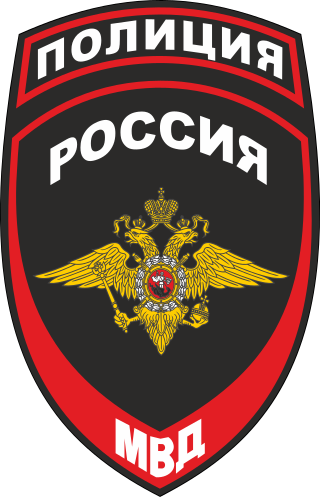
The Police of Russia is the national law-enforcement agency in Russia, operating under the Ministry of Internal Affairs from September 8, [O.S. 20] 1802. It was established June 7, [O.S. 18] 1718 by decree from Peter the Great and in 2011, replacing the Militsiya, the former police service.
Russian police reform is a reform initiated by then President Dmitry Medvedev to improve the efficiency of Russia's police forces, decrease corruption and improve the public image of law enforcement among other goals. On 7 February 2011, amendments were made to laws on the police force, the criminal code and the criminal procedure code.

The Dumas Brothel was a brothel in Butte, Montana. The brothel was founded by French-Canadian brothers Joseph and Arthur Nadeau in 1890 and named after the nominal owner, Delia Nadeau, née Dumas, who was Joseph's wife. It grew considerably through the years, with the miners employed by the city's copper mines often patronizing the establishment. After several changes of the "madams" and continuing pressure from authorities, the brothel closed in 1982, described as "a rare, intact commentary on social history". At the time of its closure, it was the longest operating brothel in the United States, having operated years after prostitution was made illegal. After closing, the brothel changed hands several times, eventually becoming a tourist attraction owned and managed by a series of Butte residents.
The following is a timeline of the history of the city of Novosibirsk, Russia.
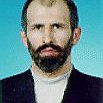
Nadirshakh Mugadovich "Nadir" Khachilayev was a Russian politician, member of the 2nd State Duma, lower house of the Federal Assembly.

Vladimir Ippolitovich Zhernakov was a merchant, public figure and politician in the Russian Empire and the Soviet Union. The first city head of Novonikolayevsk from 1909 to 1914.

Kryukov House is a building in Zheleznodorozhny City District of Novosibirsk, Russia, built in 1908. It is located on the corner of Sovetskaya and Gorky streets. The house originally belonged to the merchant Zakhary Grigoryevich Kryukov.
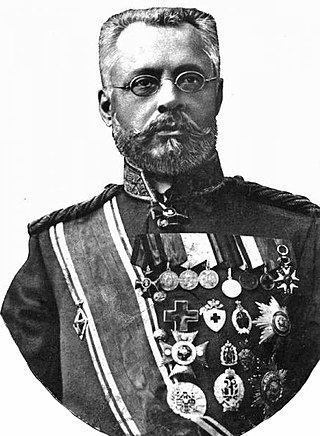
Nikolay Lvovich Gondatti was a Russian statesman, a researcher of Northern and Northeastern Siberia. Stallmeister of the Court of His Imperial Majesty Nicholas II, Active State Councillor. A member of many Russian scientific societies.

The Fire of Novonikolayevsk was a conflagration that swept through the central part of the city of Novonikolayevsk on May 11, 1909.
Sugar Riot was a riot that occurred in Novonikolayevsk, Russia, on 9 November 1916. The unrest was the result of shortage of sugar.
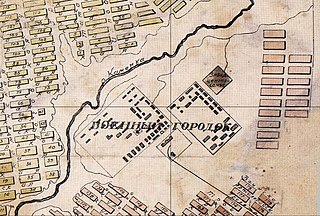
The Military Town is a building complex in Oktyabrsky District of Novosibirsk, Russia. It was built in 1910–1913. New buildings also appeared during the Soviet period.

New People is a political party in Russia formed in 2020. New People is considered a liberal party, and observers also often refer to it as centrist or centre-right.
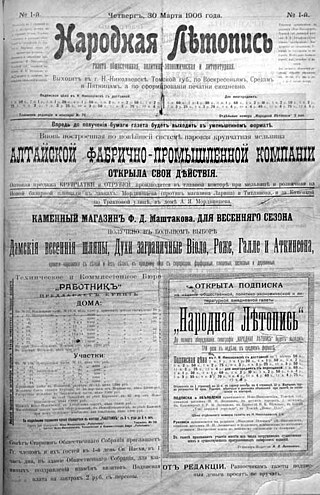
The Narodnaya Letopis was the first newspaper of Novonikolayevsk, the Russian Empire. It was published in 1906–1907 and 1909–1910. The founder and first editor of the newspaper was Nikolay Litvinov.

Grigory Ivanovich Zhernovkov was a Russian journalist, lawyer, Siberian regionalist, public and political figure.
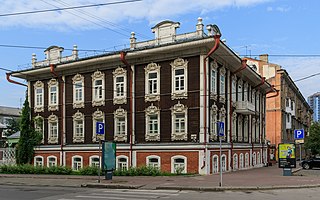
Women's Gymnasium of P. A. Smirnova was an educational institution founded in Novonikolayevsk in 1905 as a school of the 2nd category. In 1907, the educational institution was reorganized into a women's school of the 1st category, and in 1910 it was transformed into a women's gymnasium. Since 1916, the institution has been officially known as The First Novo-Nikolayevsk Gymnasium of the Ministry of National Education.
References
- 1 2 3 4 5 6 7 8 9 10 Ламин В. А. (2003). Энциклопедия. Новосибирск. Новосибирск: Новосибирское книжное издательство. pp. 588–589. ISBN 5-7620-0968-8.
- ↑ Новониколаевск. Оборотни в погонах. VN.ru.
- ↑ «Садили деревья под надзором полиции»: разбираем странный указ первого «мэра» Новониколаевска. Комсомольская правда.
- 1 2 Обыкновенная исторiя (изъ мемуаровъ Ново-Николаевской полицiи. Санктъ-Петербургъ: Типографiя Альтшулера. 1910.